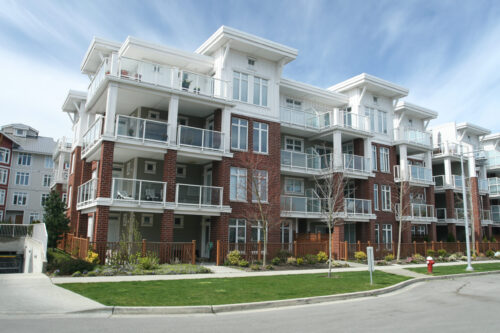
Connect with a Lima One expert today!
If you’d like to know more about this topic or see how it applies to your project, let’s talk.
Investing in Multifamily Real Estate
5 Questions to Ask Before Investing in Multi Family Real Estate
Many real estate investors looking to grow their portfolios look at multi family real estate as a clear way to accelerate growth and profit.
Of course, that is true. More rental units naturally create more incoming rent. Because multifamily residential buildings have more doors than single-family properties, investing in multifamily properties can increase the income portion of your cash flow more quickly than single-family homes can.
But that doesn’t mean that buying a multifamily property is the right approach for everybody. In fact, using a major chunk of your leverage to purchase a multifamily investment property could be precisely the wrong move as you look to continually invest in real estate.
So how do you know if multifamily real estate investing is right for your investment portfolio, instead of other real estate investments or even the stock market? Ask these key questions to find the answer.
1. Are you local?
Many real estate investors in search of the best deals on rental properties look outside of the area where they live in search of a multifamily property with the best potential balance sheet. This approach can work, but it takes a lot of expertise. Managing real estate investments from a distance isn’t always easy, and multifamily properties simply add more tenants and more potential problems.
If you’re local, you can mitigate a lot of these risks by showing up at the property and using your local knowledge. If you’re not local, you will need to rely on others to help you solve problems and answer questions. This means you’ll need a strong real estate team and people with local expertise. Without these things, you’re taking on more risk in a multifamily property investment.
2. Who will manage the property?
Property management is a matter of personal preference for real estate investors. Some prefer to be hands-on in interacting with renters and maintaining a property. Others prefer to use an intermediary property management company so they can focus on finding the next deal.
Either approach can work, but it’s important to realize how purchasing a multifamily investment property raises the stakes. It’s the same simple math we’ve discussed already—the more units you have to rent, the more issues you’re going to have. Having the property management skills and/or team in place to deal with this increase will help you succeed.
Just as importantly, you need to make sure you have the bandwidth to manage issues. If you’re doing it yourself, can you handle the extra work the extra doors will require? If you have a property management company, does it have the ability to grow with your portfolio? If not, a new multifamily investment may create an inflection point for making a change in your approach to property management.
3. How strong is your team of vendors?
Because more doors equal more work, you need to have a team of vendors in place to do the work. Do you have a handyman, a plumber, an HVAC technician, and a painter on staff? Do you have someone who can maintain common areas on a regular basis? Are those people responsive and reliable?
Having a strong team of vendors will be key to success. You likely won’t be able to do all the work yourself, nor will you want to. Make sure you know who to call, and that you trust them to respond on a quick timeline and a fair price.
4. What is your plan for finding renters?
Successful multi family property investments aren’t just about managing the renters you have. They also require that you have strong processes for finding the right renters. This includes how you market rental properties and how you evaluate potential tenants.
This process is especially important if you’re trying to stabilize your rent rolls or add value to a property by improving the rental units and then raising rents.
Your property management company may be able to help here, or you may need to find a software-based solution. Either way, make sure you have a plan about how you will fill your multi family real estate with quality tenants before you make the purchase.
5. How well do you know the hyperlocal market?
We’ve already discussed the importance of being local when it comes to managing your property and assembling a real estate team. But the best multifamily investors also have a hyperlocal knowledge on the neighborhood or even street level where they invest.
Here’s why this is important; You need to be able to know what type of housing is needed where the property is. Is workforce housing needed? Does the typical renter expect amenities often found in Class A housing? What kind of rents will the hyperlocal market sustain? Knowing the answer to these questions will allow you to make the right value-add rehab decisions and keep units rented with little to no turnaround time.
Conclusion
When you ask these questions and find good answers, you’ll be ready to profit from multi family real estate investments. And when you’re ready, Lima One is ready to finance your multifamily investment whether you need a stabilized bridge loan or financing for a value-add rehab. If you’re ready now, contact us or apply now, and get your multifamily investment plan rolling.
Subscribe for More Insights
Get the latest industry news & Lima One updates.








